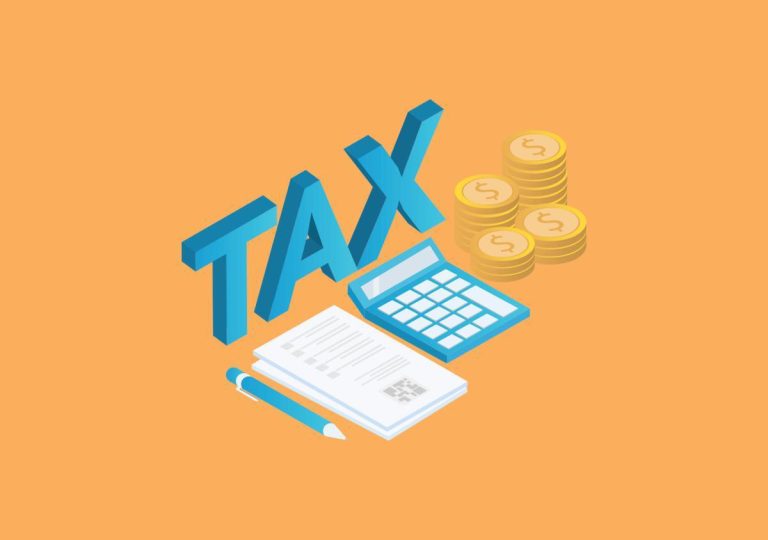Hong Kong Financial Reporting Standard (HKFRS) 9 Financial Instruments, which came into effect on 1 January 2018, is a new financial instruments accounting standard applicable to entities reporting under HKFRS. Replacing Hong Kong Accounting Standard (HKAS) 39 Financial Instruments: Recognition and Measurement, HKFRS 9 was issued with the aim to better align the accounting treatment of financial instruments with a company’s risk management activities, and provide more relevant and understandable information to users of financial statements.
HKFRS 9 has been applied for over a year. During the year, the Institute’s Standard Setting Department (SSD) reached out to technical experts and auditors in accounting firms to understand the challenges arising from applying HKFRS 9. This article explains the main challenges encountered by corporates, specifically small- and medium-sized entities (SMEs) because of additional costs and expertise required in applying HKFRS 9. It also shares some practical tips on how to address those challenges.
Measuring the fair value of unquoted equity instruments
Accounting requirements
Under HKAS 39, investments in equity instruments were primarily measured at fair value. However, the standard contained an exception from fair value measurement for investments in equity instruments that did not have a quoted price in an active market and whose fair value could not be determined reliably. Those equity investments were required to be measured at cost less impairment. Many SMEs in Hong Kong had been applying this exception because of difficulties in determining the fair value of their unquoted equity investments.
HKFRS 9 removes this exception, making fair value measurement mandatory for all equity instruments. This is because fair value provides predictive value about the timing, amount and uncertainty of future cash flows and more relevant and useful information than cost measurement (HKFRS 9 paragraph BCE.66). In addition, the incremental benefit of fair value measurement generally outweighs the additional cost, particularly when the investments individually or aggregated are material to the financial performance and position of the entity.
Application challenges
In the absence of active markets for and readily available observable inputs for unquoted equity instruments, many entities find it challenging to measure such investments at fair value. Measuring the fair values of unquoted equity investments usually necessitates the use of unobservable inputs (i.e. level 3 inputs under HKFRS 13 Fair Value Measurement), which require entities to exercise judgement and incur significant cost (for example, in valuers’ fees). Entities may also find it difficult to get sufficient and timely information about the investee in order to perform a valuation when they are a minority shareholder.
Practical tips
(i) Guidance on doing a valuation
To help entities address these challenges, the International Accounting Standards Board (IASB) issued educational material, which provides guidance on commonly used valuation techniques for determining the fair value of unquoted equity instruments. This material also includes examples illustrating how, even when an entity has limited financial information about its investee, the fair value of an unquoted equity instrument can still be measured by applying appropriate valuation techniques.
(ii) Considerations when making investments
When investing in unquoted equity instruments, entities should consider doing the following:
- Confirm that the investee’s information, including annual financial information, will be accessible on a routine basis for determining the fair value.
- Perform due diligence of the investee to ensure it has a proper governance structure and to ascertain the integrity of the financial information it provides.
- Create well defined valuation policies and procedures and appropriate internal governance for all investments made.
- If the entity has no in-house valuation expertise, engage an external qualified valuation specialist to perform a written, independent, and credible valuation of the investment both at acquisition and for subsequent periods.
(iii) Circumstances when cost would be representative of fair value
HKFRS 9 notes that, in limited circumstances, cost may be an appropriate estimate of fair value. For example, if insufficient recent information is available to measure fair value, or if cost is the best estimate within a range of possible fair value measurements. However, it is the SSD’s observation that cost would only be appropriate in extremely rare cases after initial recognition. This is because external and internal developments would indicate that cost is not representative of the investee’s fair value. For example, changes to the economic environment, changes in performance of its peer companies, or internal changes related to its management strategy, product lines or financial results. Extremely rare cases where cost is appropriate might include cases where the investee is a dormant company or the investee has only been acquired for a short period after initial recognition.
(iv) Consider applying SME Financial Reporting Standard
HKFRS are developed with entities that have public accountability in mind (e.g. listed companies). These entities are usually expected to have the capabilities to report their investments at fair value. Users of financial reports of such entities demand fair value information and the SSD acknowledges that valuations come at a price.
Accordingly, we encourage entities that meet the criteria set out in the Hong Kong Companies Ordinance to consider applying the Small and Medium-sized Entity Financial Reporting Framework and Financial Reporting Standard, a historical cost-based accounting framework that the Institute developed for entities that do not have public accountability and have less complex transactions and operations. Entities could also consider applying the HKFRS for Private Entities, a standard that is converged with the IASB’s IFRS for SMEs.
Measuring expected credit loss for trade receivables
Accounting requirements
Under HKAS 39, a loss event needed to occur before an impairment loss was recorded. This was criticized by many investors as “too little, too late.” HKFRS 9 requires entities to estimate and account for expected credit losses (ECL) for financial assets subject to its impairment requirements. When measuring ECL, entities are required to consider not only past events and current conditions, but also reasonable and supportable forward-looking information. HKFRS 9 also requires an unbiased and probability-weighted impairment amount determined by evaluating a range of possible outcomes.
This new impairment model also applies to trade receivables and HKFRS 9 provides a “practical expedient” to calculate the ECL in the form of a provision matrix.
Application challenges
There is a perception that ECL only affects banks and so some entities incorrectly think they can ignore the impact of ECL on trade receivables. Some entities also wrongly assume that ECL for trade receivables would be immaterial, solely based on the fact that there had been little or no default by customers in the past. Some entities are also unsure what is “reasonable and supportable information” and how to incorporate relevant forward-looking information and use the provision matrix appropriately.
Practical tips
Example 12 in the Illustrative Examples accompanying HKFRS 9 demonstrates use of a provision matrix to determine the ECL for trade receivables. This article includes some practical tips and a suggested stepped approach to consider when building a provision matrix. However, there is no prescribed method for the provision matrix, nor a specific requirement to use a provision matrix. Preparers could consider other appropriate methods.
(i) Disaggregate trade receivables based on shared similar characteristics
If historical credit loss experience shows significantly different loss patterns for different types of customer, trade receivables should be grouped by credit risk characteristics. Appropriate groupings could be based on credit terms and other attributes, for example geographical location, product type, type and size of customer (HKFRS 9 paragraph B5.5.5). Historical loss rates should be determined specific to each group as it is not appropriate to use one loss rate for different credit risk characteristics.
Consider a toy manufacturing company that sells its toys to wholesalers and retailers in Hong Kong, Mainland China and South Korea. The company first groups its receivables by wholesalers and retailers because they have different risk characteristics. Then, the company determines it should further disaggregate the two groups based on geographical location.
Assume that the toy manufacturing company has identified six subgroups (see Table 1 below).
(ii) Determine the appropriate period over which historical data should be collected
HKFRS 9 does not provide any specific guidance on how far back the historical data should be collected. Judgement is needed to determine the period over which reliable, relevant and representative data can be obtained. The sample should be long enough to be representative of the current period, but not so long that changes in market conditions or the customer base make the analysis invalid.
Assume that based on its current portfolio of Hong Kong wholesalers, the company determines that the historical loss rates for the past three years would provide useful information. Data captured over the relevant period should be combined and averages calculated. For simplicity, this example calculates historical loss rates using one year of data.
(iii) Calculate payment profile for trade receivables
Once subgroups have been identified and the historical loss data collection period has been selected, the next step is to determine the amount of receivables outstanding in each aging time band. In other words, an entity needs to analyse its historical data to determine how long it took to collect all of its receivables and the portion of receivables in each aging time band that was ultimately written off. This is critical for determining the historical loss rates for the next step. See Table 2 below.
(iv) Determine appropriate historical loss rates
Once the payment profile has been analysed and the balances outstanding for each aging time band have been determined, the historical loss rates are calculated by dividing the total amount written off by the sales amounts. This calculation is shown on Table 3.
(v) Incorporate forward-looking information
The key objective of this analysis is to understand what drives the level of bad debts. The loss rates should therefore not only reflect historical data but also any relevant forward-looking information. This could include macroeconomic factors such as interest rates, GDP growth, market sentiment indicators (e.g. purchasing managers’ indices), and unemployment rates. Entities should consider how historical loss rates have been sensitive to changes in macroeconomic factors and determine if there are any observable relationships. For example, if an increase in the unemployment rate correlates with an increase in defaults, then the loss rate should be adjusted for this. Depending on the relevant facts and circumstances, forward-looking information may not affect all age bands by the same magnitude, or even at all, and there may be multiple forward-looking adjustments to the loss rate.
Turning back to our example, the company has determined from experience that trade receivables arising from sales to wholesalers in Hong Kong are sensitive to changes in the local unemployment rate and that the default rate is likely to increase if the unemployment rate rises. The last time that there was an increase in the unemployment rate by 1 percent, trade receivable losses increased on average by 50 percent. Assuming that the unemployment rate increases by 1 percent, the company estimates the loss amount using the same sales and payment profile, and then calculates the adjusted default rate (see Table 4 below) based on this observed correlation.
(vi) Calculate the expected credit losses
Finally the ECL should be calculated by multiplying the actual receivables at the period end in each aging time band by the expected default rates determined in (v). Once the ECLs have been calculated, sum them for the total ECL.
Table 5 below illustrates how ECL for the period is calculated using a receivables balance of 850,000.
(vii) Obtain relevant information from outside the accounting department
Obtaining the indicators used to measure ECL for trade receivables will often require information to be obtained from outside the accounting department. Preparers should determine the departments to contact, such as the sales and credit department, to obtain relevant information that corroborates assumptions made.
Disclosures
Determining the fair value of unquoted equity instruments and ECL for trade receivables requires the use of judgement and the consideration of all facts and circumstances surrounding the measurement. It is important for entities to disclose sufficient information about how they determine these values so that users of financial statements can assess the impact on an entity’s financial results.
Fair value disclosures for unquoted equity instruments fall under the requirements of HKFRS 13. As mentioned above, the standard requires extensive qualitative and quantitative disclosures for fair value measurements, including unquoted equity instruments. Disclosures include a description of the valuation process and valuation technique(s), the key inputs and assumptions used and sensitivity analysis.
HKFRS 7 Financial Instruments: Disclosures requires disclosures that help users of financial statements to understand the amount of ECL, the basis for their measurement and the reasons for changes in ECL over time. In particular, entities are required to provide information about key assumptions and the estimation techniques used. For trade receivables, disclosures may include the historical loss rates, how trade receivables are grouped, and how relevant macroeconomic factors were applied to adjust historical loss rates.
The SSD would like to remind entities to refer to both standards for the relevant disclosure requirements, and provide disclosures that are specific to the circumstances of the entities.
This article is contributed by the Institute’s Standard Setting Department in consultation with experts from accounting firms. It is intended for general reference only and has no authority. The Institute and the staff of the Institute do not accept any responsibility or liability in respect of the article and any consequences that may arise from any person acting or refraining from action as a result of any materials in the article. Comments on this article are welcomed, and should be sent to commentletters@hkicpa.org.hk.





















